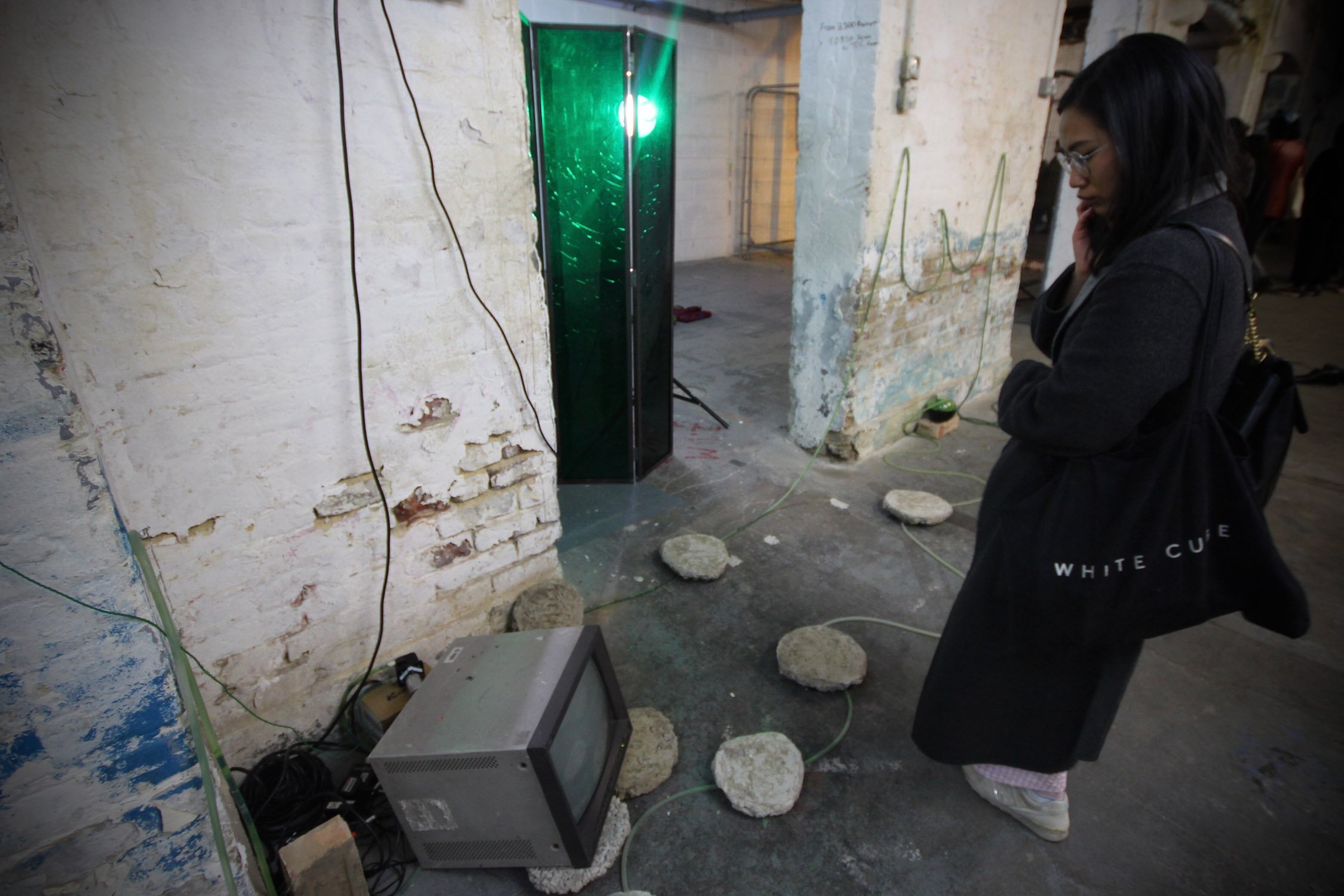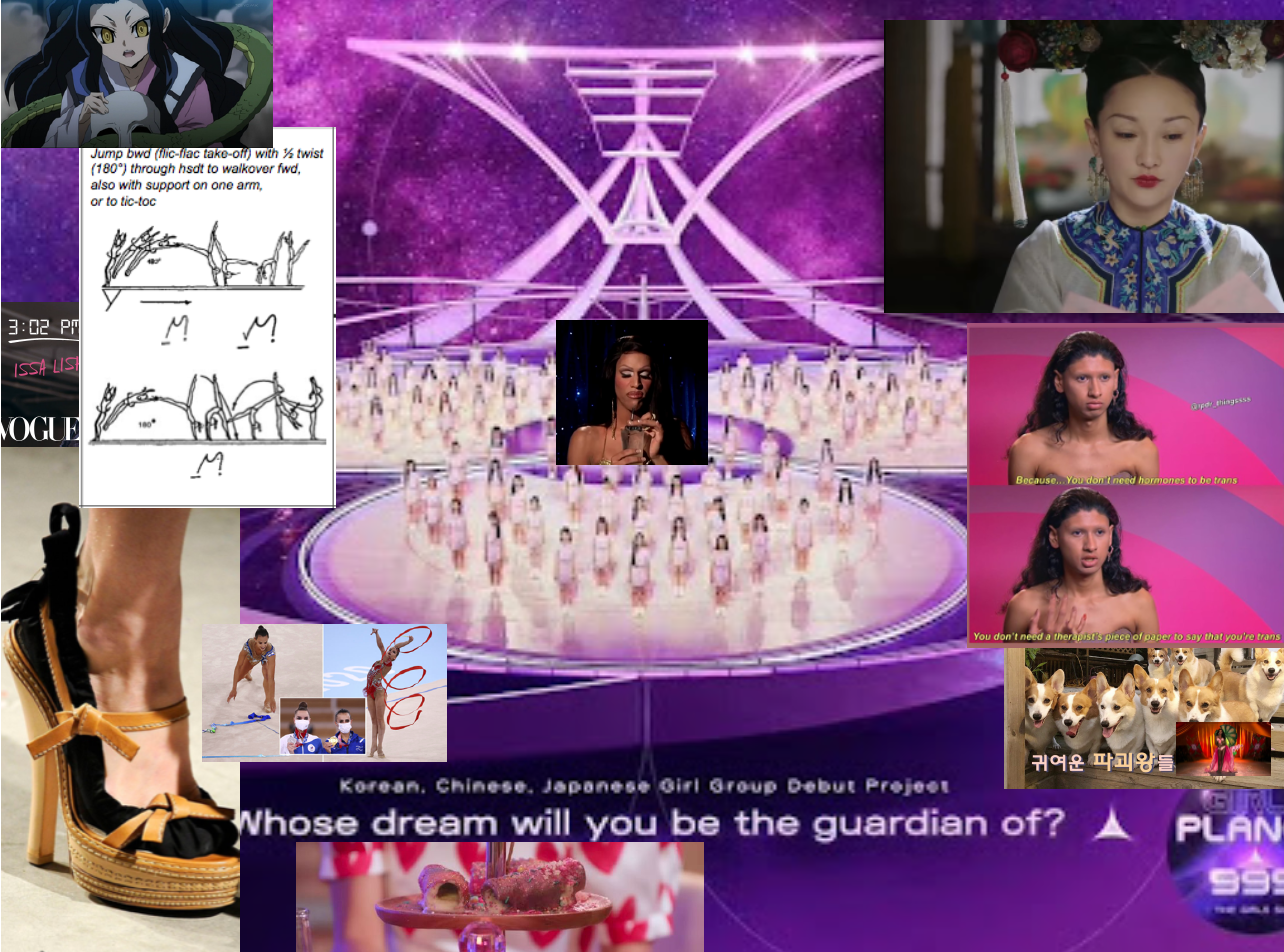Fresh Faces: Duong Thuy Nguyen
Communicating hidden fragments of stories
By Zhai Qiutong
A&M's Fresh Faces is where we profile an emerging artist from the region every month and speak to them about how they kick-started their career, how they continue to sustain their practice and what drives them as artists. Read our profile on artist Duong Thuy Nguyen here.
Duong Thuy Nguyen, Bamboo leaves stage design, 2020, Vincom Centre for Contemporary Art, Hanoi. Image courtesy of VCCA.
Could you talk about the origin of your art practice, transiting from a theatre background?
I started working in the Vietnamese art scene in 2020. I was involved in Vietnamese traditional theatre and taught at Hanoi Academy of Theatre and Cinema. The scripts that we used to perform were very old and did not adapt with contemporary theatre, which present some limitations in expressing social issues in Vietnam. Performing in Vietnam also involves a lot of paperwork and face strict censorship, so we cannot talk directly about a specific social problem.
My expansion into art is a way of reaching out and advocating for such issues. I started exhibiting my work in Vietnam and became involved in the art after my residency with the Đàn Đó group. I was inspired by their use of material. They spent eight years creating their own instrument out of bamboo. I also met artist Nguyen Duc Phuong, who supported the idea of me going to study abroad to see the world. That led me to apply for and receive a scholarship to study Fine Art at Central Saint Martins (CSM) in London.
There is more freedom in my art practice compared to theatre, because I can express my concerns and protest in a hidden way. My practice now focuses on climate change and many environmental issues that Vietnam faces.
What is one pivotal work that set you into the direction of your current art practice?
I grew up in Hanoi and witnessed the rapid urbanisation and the environmental disruption in my hometown. Since 2008, the city has urbanised quickly, following Beijing’s model. Apartment buildings and shopping malls expanded into the province where I originally lived. In my childhood, my family and I used to go back to the village during Tết holiday and pray to our ancestors, but now I no longer have a place to go back to. Roads are built through the village over the rice farm, and my childhood is replaced by factories. One time I went to Nam Son, outside of Hanoi, as a translator for a friend's article. I met a resident who lived there for more than 50 years. All of her family are dying of cancer, because the area was turned into a landfill, with trash as high as a mountain. There are so many more examples. Through my practice, I seek to raise awareness for people to notice what is happening in Southeast Asia at the moment and what the cities and people are dealing with.
Duong Thuy Nguyen, Detail of ‘Unnamed land’, 2022, Folding screens sculpture in the exhibition ‘De-Oriented’. Image courtesy of the artist
I presented ‘Unnamed Land’ (2022) at the ‘De-Oriented’ exhibition. I revisited my memory about my hometown and was inspired by the folding screen. It is a piece of furniture one can find in every house in my village, usually a divider between the bedroom and the living room. In my work it is engraved with the map of Hanoi and it is see-through, to express that a fragment of the story is always hidden. Concrete and metal allude to the urbanisation happening in Hanoi. The tube of water attached has a sensor that only causes the water to run through the concrete when people walk past. It draws to the prediction that Hanoi will be flooded by 2100. When concrete covers the land, there is no way that water can be observed and channelled away.
Who has been a mentor or an important artistic influence for your practice?
My practice has been inspired a lot by my course leader, Erika Tan, especially her work on archiving. The idea of archives is neglected in Vietnam, even though there is so much cultural and environmental change happening now. I see people’s lived experience as an archive of these changes. What is left other than a nostalgic feeling?
I met curator Đỗ Tường Linh in Vietnam, who is currently preparing for the Berlin Biennale. I learned from her that to work in art, one has to be always active. Because contemporary art is changing so quickly, in a way, we have to constantly adapt with it.
What was one critical piece of advice you were given?
Erika always tells us that you have to rethink all the concepts that you understood or were taught before. They could be wrong. You must process the knowledge that you have been told and dig deep and understand it yourself. Writing helps me to see a subject from many angles in order to understand it completely.
Duong Thuy Nguyen, ‘Harvest the rain’, 2021. Image courtesy of Every Woman Biennial.
“Erika always tells us that you have to rethink all the concepts that you understood or were taught before. They could be wrong. You must process the knowledge that you have been told and dig deep and understand it yourself. Writing helps me to see a subject from many angles in order to understand it completely.”
Could you talk about the experience as a multi-disciplinary artist?
My work is very diverse, because trying different things helps me brainstorm better. I also write about the Vietnamese art scene, for example for Art & Market and Ocula, because I want it to be represented in English publications and reach a broader audience. They may then truly understand culture and life in Vietnam.
Exhibition View of the ‘Unnamed Land’, 2022, at the exhibition ‘De-Oriented’ at The Ugly Duck, London. Image courtesy of the artist.
Could you talk about the premise of the exhibition ‘De-Oriented’ (2022) and if you met any challenge along the way?
The An.Other Asian Collective (AOA) started with my conversation with Rianti, one of the co-founders who also studies at CSM. We do not feel like our voice is being heard in our course when we bring up certain issues. We realise we need to reframe Southeast Asia as not just a travel destination, but exposing the issues that the people there have to face, and how their culture is being destroyed and taken away.
We made an open call for Southeast Asian artists based in London and found out there are many artists sharing the same concern. In the collective, we do not talk much about our individual identities as a Vietnamese or an Indonesian, but about the issue of the land that we were born in and wanting it to be heard.
There are some struggles as a newborn collective. It is hard to get support as minorities in London, but we will keep reaching out. We received great support from Erika. She told us it was difficult when she tried to start a collective like this several years ago, but now may be the right time for us.
Community building is also a crucial element in your practice. Could you talk about your effort in the Mekong Culture Club?
I started working at the Mekong Culture Club as a regional representative in 2020. Through this connection with other Southeast Asian countries, I host art talks and other activities that gather, not just artists but other communities such as scientists and journalists. Personally, I do not do art for art's sake, but to resolve issues or protest. It is important to understand the core of the subject that I am researching through multi-disciplinary discourse. For example, when I was researching Bai Giua (also known by the name Banana island), I spoke with archaeologists and understood how its dams were built. There was also one art talk that focused on wildlife trade in Vietnam engaging with journalists and activists who explained how the system works. The talk shows how art could be a tool to connect various communities and bring the information closer to the participants.
What are you currently working on?
I will start working with the Shaping Group at my residency at the Museum of the Home. We will develop a Vietnamese archive, especially in relation to climate change in Vietnam. At the University of the Arts London (UAL), I am also part of the Climate Emergency Network. Other members were surprised when I talked about all of the issues that Vietnam and other countries in Southeast Asia are dealing with. Now it is the time for Southeast Asians, not just artists, to reach out to a broader group, make people notice and do something about it. Now this is the main focus of my practice.
Duong Thuy Nguyen, ‘Floating Table’, 2022, View of UAL Earth Day event, 2022, at Central Saint Martins, University of the Arts London (UAL) London. Image courtesy of the artist.
Do you have a favourite art space in Vietnam? Why are you drawn to that space?
I am based mostly in Hanoi, and Manzi Art is one of the most interesting art spaces. The gallery hosts many activities and quality exhibitions. It is also an experimental space for artists to develop their practices. In Saigon, there is this factory turned Contemporary Art Centre. I wrote about one of their exhibitions on Ocula that featured artist Thao Nguyen Phan, whose work also focused on environmental issues in the Mekong Delta region.
What are some of your hopes or visions for the art scene in Vietnam and in the region?
I hope that Vietnam’s art scene can expand more and connect with the rest of the art world. Furthermore, it is also important for the art to connect with other disciplines such as science and architecture. I share the same sentiment with other members of our collective about how local cultures are being taken away by urban development. Art is a tool to bring information closer to the community and I practise by way of a social gathering.


















